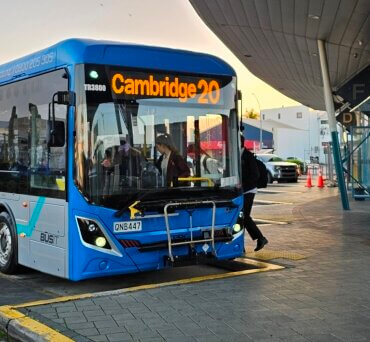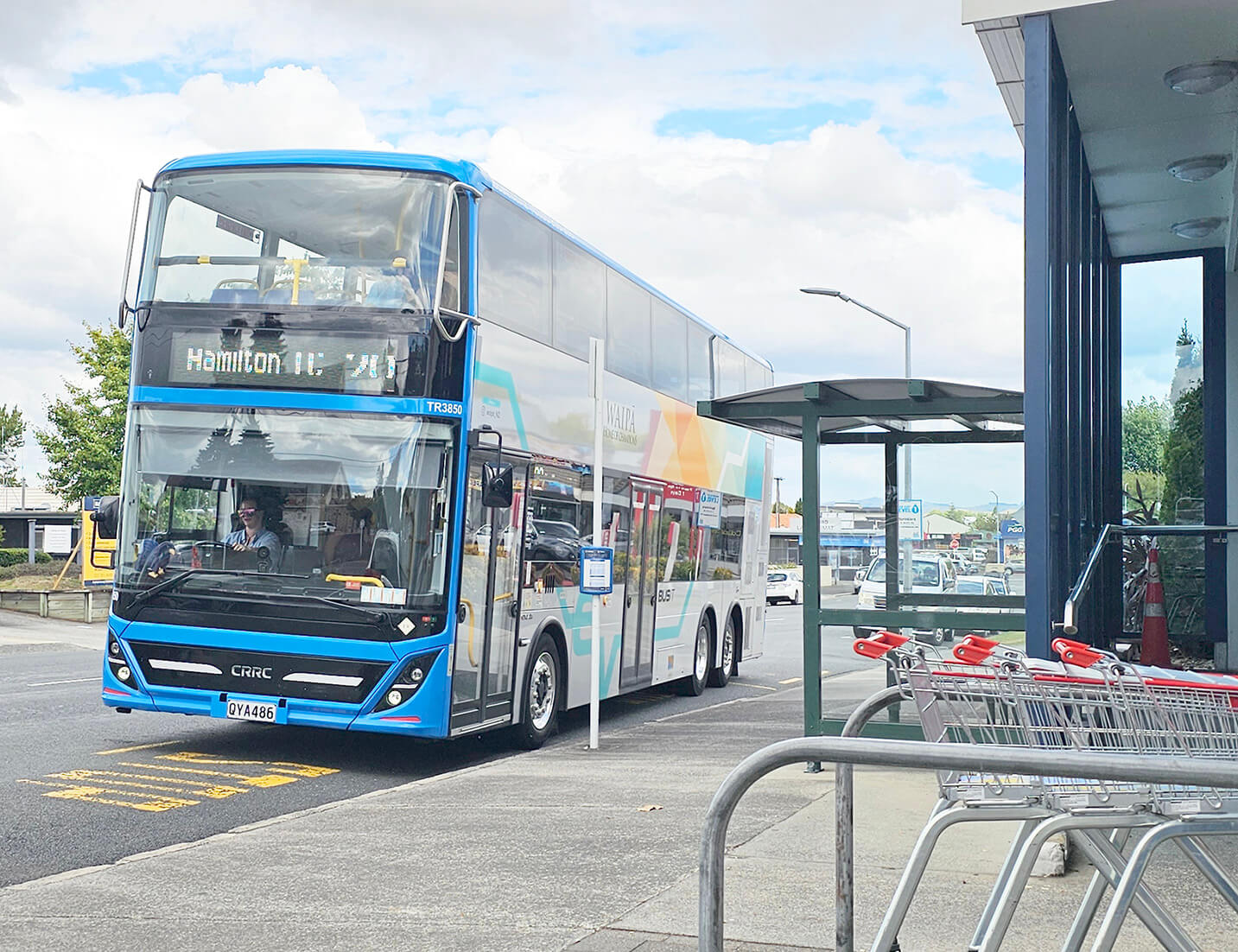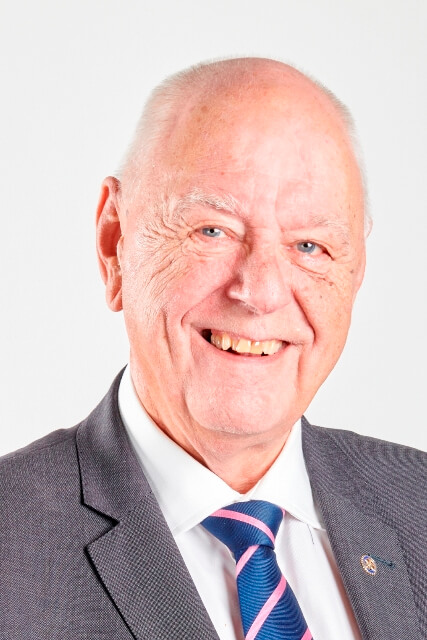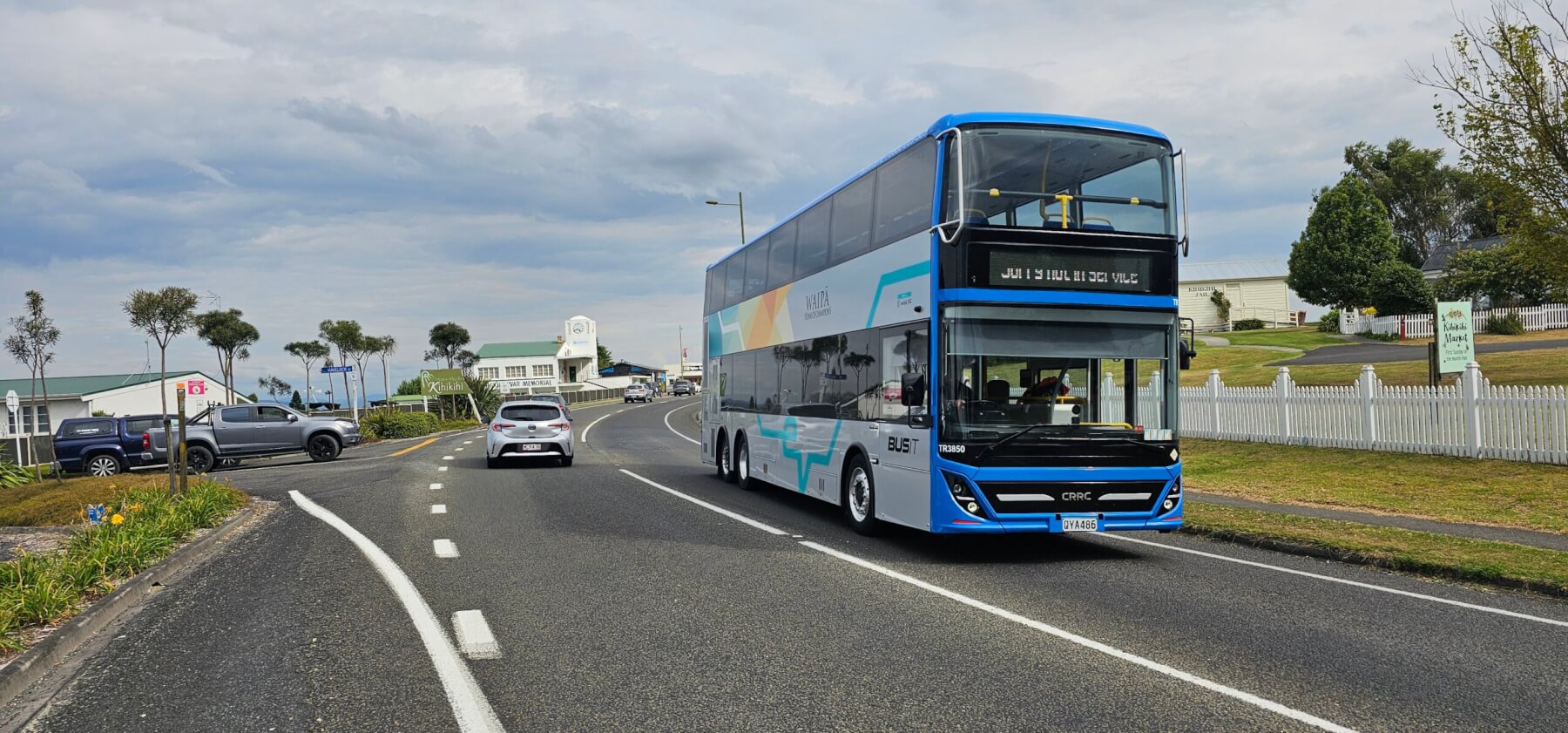
On the (Regional) buses
Flexible bus services across Waipā towns still appear to be years away, despite a significant increase in passenger numbers on the region’s two main public transport routes.
At a recent Waipā District Council workshop, Waikato Regional Council – responsible for public transport planning and delivery – reported strong growth.
Average quarterly patronage has jumped from 17,000 pre-Covid to 30,000. While the Te Awamutu–Kihikihi route traditionally saw higher numbers, usage was now nearly equal with Cambridge, said Public Transport team leader Vincent Kuo.
Cambridge saw a 48 per cent increase in passengers over the past year, while Te Awamutu rose by 35 per cent.
New spatial data presented at the workshop revealed where and when passengers were boarding and alighting, and what user categories they fell into.
Waipā councillor Roger Gordon noted the data showed the Cambridge service was not effectively meeting local needs. Only about five per cent of passengers were boarding or alighting in Cambridge and Leamington, while a quarter of users were travelling entirely within Hamilton.
Gordon cited the success of Timaru’s flexible on-demand service, which was extended after a five-year trial.
“I’m wondering whether now is the time to strategically consider a local public transport service – whether that’s a flexi-style on-demand model or an Orbiter-style loop,” he said.
The regional council was looking at ways to optimise public bus services as it renewed contracts around the region.
“However, I am concerned that Cambridge may be left behind in the new regional council rating regime, and we really need to be strategically lobbying for a planned allocation of resources for local public transport.”
With an urban population of 21,366 – and an additional 8600 people living on its rural fringe – Cambridge is the largest town in the region which made it an ideal candidate for a flexible service, especially as the town is part of a Tier 1 growth area.
Already there were smaller section sizes and a shift away from car dependency, said Gordon which made public transport essential.
However, a previous proposal from the regional council was rejected by Waka Kotahi NZ Transport Agency, and without local funding, a new service remained unlikely.
In response to Gordon’s call for a business plan, Waipā transportation programme engineer Erik van der Wel said staff had already begun developing a framework. Estimated costs for planning a service in each
The Cambridge Connections project would be a key enabler for any future work.











